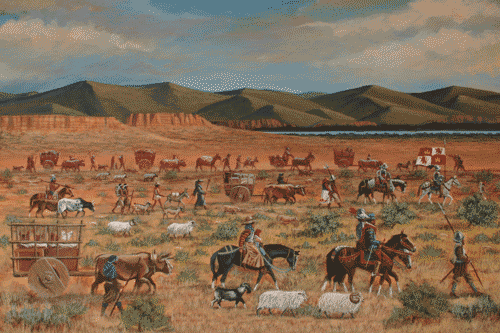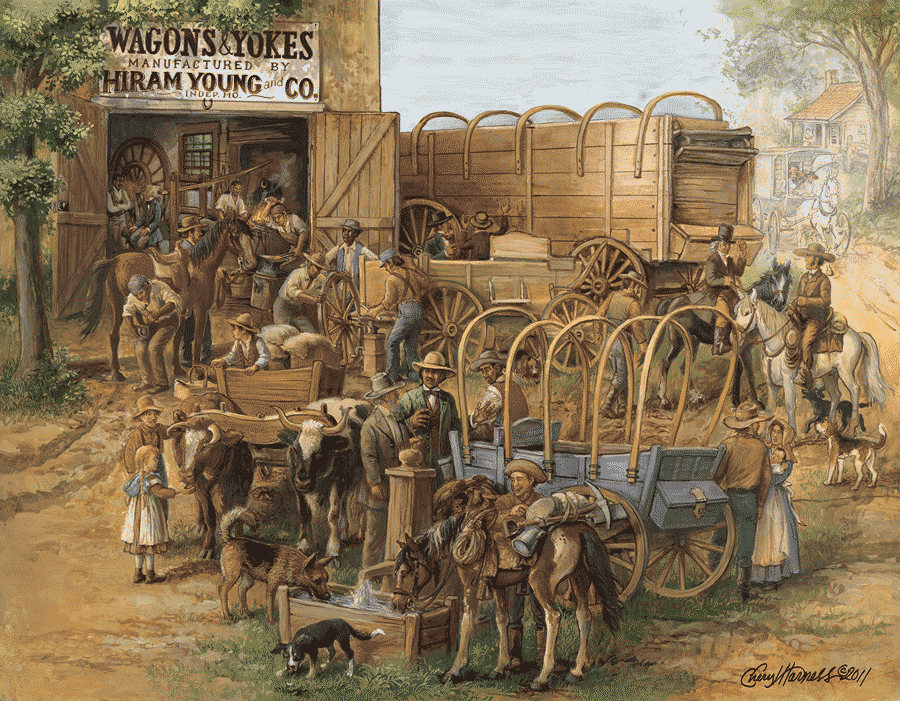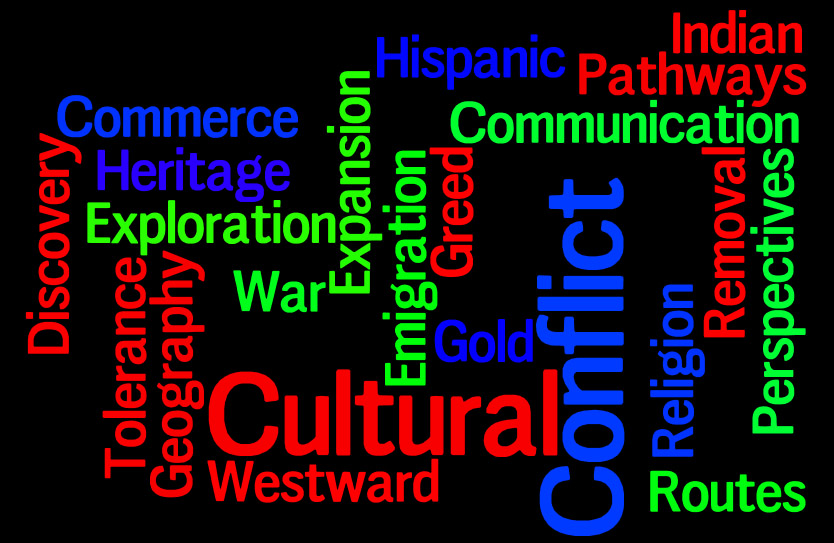Last updated: April 23, 2025
Lesson Plan
Pathways and Perspectives: National Historic Trails Multiday Lesson Plan

- Grade Level:
- Middle School: Sixth Grade through Eighth Grade
- Subject:
- Social Studies
- Lesson Duration:
- 90 Minutes
- Common Core Standards:
- 6-8.RH.1, 9-10.RH.1, 11-12.RH.1, 6.SL.4, 6.SL.5, 8.SL.4, 8.SL.5, 9-10.SL.4, 9-10.SL.5, 11-12.SL.4, 11-12.SL.5
- State Standards:
- See state standards.
- Additional Standards:
- See district standards.
- Thinking Skills:
- Understanding: Understand the main idea of material heard, viewed, or read. Interpret or summarize the ideas in own words. Creating: Bring together parts (elements, compounds) of knowledge to form a whole and build relationships for NEW situations. Evaluating: Make informed judgements about the value of ideas or materials. Use standards and criteria to support opinions and views.
Objective
STUDENT OBJECTIVES
1. Collaborate with peers by synthesizing and analyzing research on the National Historic Trails
2. Design effective presentation using appropriate gestures and speaking skills
3. Discuss the pathways and perspectives of traders, emigrants, Spanish and Indian Americans
4. Examine the stories of nine national historic trails
5. Create a presentation that demonstrates synthesis and higher level analysis
6. Present findings about the trails to the rest of the class
Background
Rationale for lesson:
The National Trails Intermountain Region has developed a 3-5 day lesson focused on the skills of collaboration and presenting, in an effort to teach students about the content and concepts along nine of the national historic trails. The purpose of this is to have them not only research and understand, but also think critically about the pathways and perspectives of trail travelers. Similar to interpretive work within the National Park Service, your role as a teacher is to help students engage with stories on the trail, i.e. How does it feel when you enter someone else’s land? What are boundaries? Asking relatable questions such as this (embedded into lesson) helps students dig deeper into the story, pulling out more meaningful themes and ideas.
Teachers will facilitate the learning, as students are actively engaged in the research of the designated trail. In an effort to promote voice and choice (student agency) in the learning, this lesson provides a series of webquest handouts intended to direct students to a series of questions alongside suggested links to online research. Students will be exploring the concepts of territory, communication and commerce, and the teacher is encouraged to facilitate the conversation by providing targeted questions about the trails.
The final assessment for this webquest (see rubric) is a presentation of new knowledge alongside a visual product (students are required to create a slideshow or image along with their research). The final research presentation measures their skills in gathering evidence, critical thinking and communication of the learning. We have already identified key common core standards that align with this assessment. However, you are welcome to incorporate your own state or district standards as you deem fit.
Preparation
Materials:
- Webquest Handouts
- Webquest Rubric
- Access to computers, internet, wifi
- Group Notes Handout
- Suggested Questions for Teacher document
- Image 1 (Wagon - for teacher): https://www.nps.gov/oreg/learn/photosmultimedia/upload/A-Man-of-Means.pdf
Materials
Reference this document to understand and communicate what national historic trails are and the diversity of trail pathways and stories.
Download Background on National Historic Trails for Teacher
The National Trails System Map shows the 19 national historic trails in the National Trails System, including the nine studied in this lesson plan.
Download National Trails System Map
These are suggested questions for the teacher to facilitate interest and understanding of trail stories.
Download Suggested Trail Questions for Teacher
Use this rubric to measure student understanding and success.
This worksheet is designed to keep students engaged while each group makes its trail presentation.
Download Worksheet for group note-taking
Provide this worksheet to each trail group for researching and preparing their presentations. There are eight worksheets.
Download National Historic Trails Group Worksheet
Lesson Hook/Preview

Procedure
Lesson One (1 Day):
-
Opener: Ask students to analyze the images taken from wayside placards - first, have them analyze the image - don’t show the accompanying captions just yet! Invite them to share what they notice. Ask them: What do you see? What do you notice? Then, read them the description of the event.
-
It is important to engage students, and to tap into background knowledge. Students may comment on topics of trade, emerging technologies, Indian removal, depending on their background knowledge. Consider opening with a few of the following questions from the suggested questions.
-
Distribute copies of the Webquest handouts (see attached). Additionally, provide students with a copy of the rubric and communicate the assessment beforehand.
-
Arrange students into separate groups, based upon the nine trails. This will vary depending on class size and intention; It might not be possible to cover all nine trails in one day. Pick the trails and themes that pertain to your objectives.
-
Direct students to the Webquest Links link (again, if you do not have technology available, follow the links and print needed documents):
-
Have students review the questions for their topic as a group and decide on the approach they want to take with their research. For example, should each group member search for the answer to one question or should the group work together to answer all questions?
-
Allow students to use any remaining time to get started on their WebQuest.
Lesson Two (1-2 Days):
Give students one, if not two, class periods to complete their WebQuests. They will be presenting next class period!
Lesson Three (1-2 Days):
-
Today, students present in groups. Remind them to listen and record notes on Groups Handout. Remind them that their notes taken from other groups will be graded; This holds students accountable for listening while others are presenting.
-
As/after the first group presents, ask questions to help students deepen understanding and extrapolate common topics, time periods and locations. Write these topics on the board, so that students can see commonalities and differences. Circle back to the list of questions from lesson one - see if students can now apply their background knowledge to the new learning.
-
After the first group presents, give students time to record all information. Have students ask at least 3 questions for the group. Any questions that students cannot answer should be written on their Webquest handout (reflection).
-
Tell students what you liked and what you learned after everyone has completed the presentations.
Vocabulary

Pathways
Perspectives
Commerce
Emigration
Geography
Westward Expansion
Indian Removal
Hispanic Heritage
Gold
Discovery and Exploration
Cultural Conflict
Greed
War
Religion
Conflict
Tolerance
Cultural Routes
Communication
Assessment Materials
See rubric.
